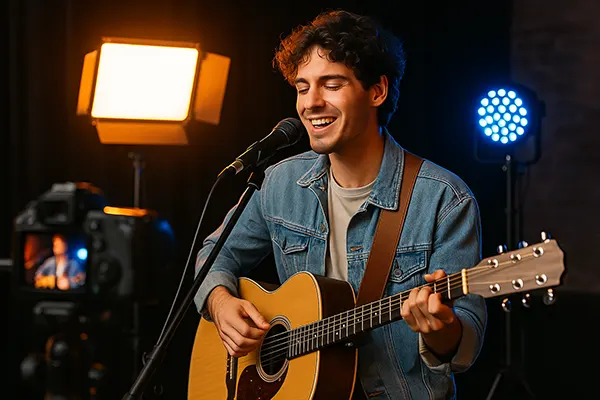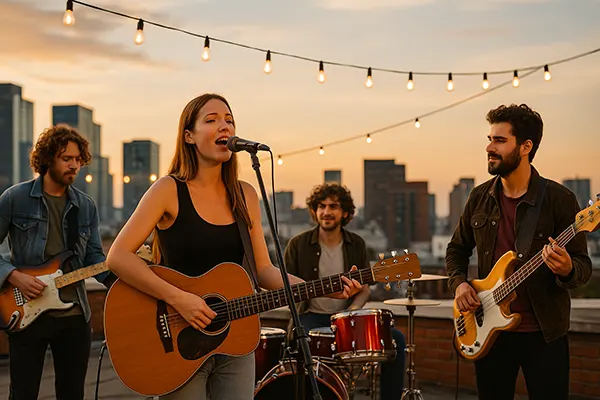
How YouTube Musicians of the 2020s Are Shaping the Entertainment Industry of the 2030s
In the early 2020s, YouTube served as a powerful springboard for aspiring musicians, offering global exposure without traditional gatekeepers. As we move towards the 2030s, the ripple effects of these digital pioneers are beginning to transform the very fabric of the entertainment industry. From rethinking record deals to reshaping label structures, YouTube-born artists are not only charting hits but also redrawing the rules of the game.
From Bedrooms to Boardrooms: The Professionalisation of YouTube Musicians
What began as casual uploads from home studios has evolved into full-fledged music careers with strategic management, international tours, and diversified income streams. Musicians who built their fan bases on authenticity and interaction now operate sophisticated enterprises. Their success stories—such as BoyWithUke, Cavetown, and Ren—demonstrate that independent branding combined with creative freedom can outpace traditional promotional models.
Many of these creators bypassed the traditional artist development process, replacing it with a self-driven journey of content creation, marketing, and audience cultivation. Their communities, formed organically over years, serve as built-in fanbases when transitioning to commercial ventures. This level of loyalty has drawn the attention of major stakeholders across the industry.
As a result, record labels now scout talent not in clubs or showcases, but in subscriber counts and engagement metrics. The professional rise of these artists illustrates a shift in power—from institutions to individuals—and it’s changing how success is measured in the music business.
Influencer Deals Replacing Classic Record Contracts
Gone are the days when the ultimate goal was a multi-album record deal. Now, flexible partnership contracts, often with shorter terms and shared branding rights, dominate. Labels like AWAL and Empire have built business models that accommodate the autonomy of digital-native artists, offering distribution and funding without demanding creative control.
These new contracts resemble influencer-brand deals more than traditional music industry arrangements. They often include clauses about social media deliverables, audience interaction, and rights to visual content. For example, artists may retain full ownership of their masters, while labels serve more as collaborators than owners.
This contract evolution allows artists to experiment with genre, image, and even format—offering singles, albums, podcasts, or video diaries—all under a hybrid model of media and music. It also lowers the entry barrier for niche or non-English-speaking musicians to reach global audiences on their own terms.
Emerging Labels Built by Creators Themselves
Some of the most influential labels of the 2030s may originate not in corporate towers, but in artist-led collectives. YouTube musicians are now founding their own labels, often rooted in community values and digital transparency. These ventures focus on fair profit-sharing, creative freedom, and mental health awareness, which contrasts with the often opaque and pressure-laden environments of old-school labels.
Examples like Taz Network, NCS (NoCopyrightSounds), and Dreambound demonstrate how community-driven music hubs can operate profitably without sacrificing ethics. These collectives are not just business structures—they are digital movements that empower creators and amplify diverse voices across geographies.
Rather than functioning solely as music publishers, these labels offer mentorship, production resources, and even shared audience networks. Their reach and influence grow with each viral release, aided by content algorithms and platform cross-promotion rather than traditional PR firms.
Decentralised Music Ecosystems and Collaborative Growth
Creator-led labels often operate on decentralised principles, favouring peer-to-peer collaboration and equity-based models. This contrasts with hierarchical management typical in major music corporations. Artists co-own catalogues, share royalties transparently, and participate in governance decisions.
Such models promote sustainable careers. By removing intermediaries, more revenue returns directly to the artist. Moreover, co-ownership fosters loyalty and interdependence within the network, leading to organic growth rather than top-down marketing strategies.
Several of these ecosystems use Web3 infrastructure to facilitate transparent payment flows, rights management, and fan involvement. Blockchain-based royalty tracking and NFT-based releases are no longer buzzwords but working systems enhancing autonomy and trust.

YouTube’s Ongoing Role in Talent Discovery and Cultural Influence
Despite competition from TikTok and Spotify, YouTube remains a cornerstone for music discovery and community engagement in 2025. Its algorithm, long-form content support, and monetisation options make it ideal for developing artists and evolving musical narratives. Its global accessibility allows musicians from any region to reach international audiences without intermediaries.
Channels like COLORS, Mahogany Sessions, and Tiny Desk have maintained influence while newer formats—reaction videos, live chat concerts, and behind-the-scenes vlogs—provide multidimensional artist exposure. YouTube’s archival nature also helps artists preserve and showcase their growth over time, enhancing credibility and relatability.
For emerging markets, YouTube often serves as the first contact point between artist and audience. It bridges geographic, cultural, and linguistic divides, making it a powerful vehicle not just for launching songs, but for shaping cross-border musical trends that influence mainstream charts.
YouTube as a Launchpad for Multi-Media Careers
Modern musicians are rarely confined to one medium. YouTube has enabled artists to build ecosystems that include music, podcasting, gaming, education, and visual arts. As of 2025, many creators—such as RoomieOfficial and The Dooo—run multi-vertical channels, expanding their impact beyond music charts.
This diversification builds financial resilience and brand depth. Fans interact with creators through various channels, from community posts to live streams. It enhances parasocial relationships that are stronger than any PR-crafted brand persona.
In the 2030s, this cross-platform flexibility may become the norm, with music careers no longer bound to labels or even genres. The YouTube-born model is not just disrupting industry tradition—it is creating a new industry altogether.
